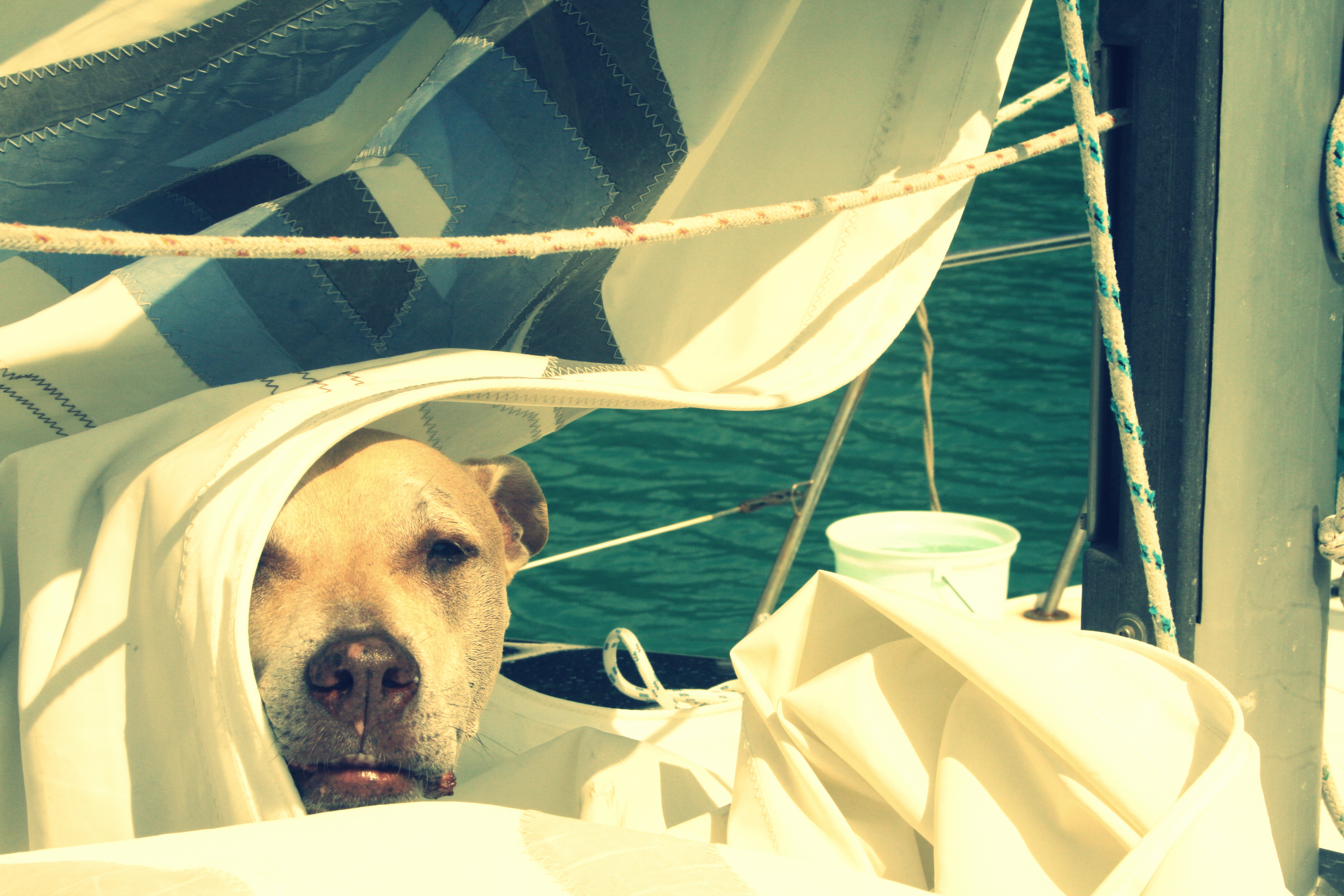Make no mistake about it: having a dog on board will limit the places you can visit, both on the water and overland.
Finding out if we could bring Kemah with us to certain countries was another piece of our adventuring puzzle.
There are over 20 independent nations in the Caribbean each with their own rules and regs regarding what is required to import animals.
OK, so that’s complicated, right? Yup, but that’s not all.
Shall we add another piece to this puzzle? Let’s!
Most of the info regarding importing animals relates to importing a pet via airplane (as in not via sailboat). If you’re lucky, the country you’re trying to visit is developed and has a lot of boaters entering well-established ports with clearly laid-out procedures in the language you speak.
Right? nice try
And, finally, because you’re travelling on a boat, it’s important to make sure all the countries along your route allow pets (or at least their regs are reasonable ie. they might quarantine your animal rather than killing it) in case you have to duck in because of weather or maintenance issues, right?
Sigh. this is getting hard.
But wait! Never fear, Me! (and you!)
As long as I have excel on my side, there’s no research project I can’t organize! Huzzah!
Yep, you guessed it, I took the research from the good folks over at Pet Relocation (great, non-sailboat specific info) as well as the info from the amazing sailing website Noonsite and made a handy-dandy spreadsheet of all the requirements of countries we were likely to visit. (Sheesh! I can hardly believe I did that – thanks a lot, past-Me!)
Even though you’d think those amazing sources would give me a better picture of what each country required, a lot of the info is less-than perfect. Here’s a great example from Panama of the “clarity” of the “rules”: “Dogs need health and anti-rabies certificates and are not allowed to land. All other animals need health certificates. In practice, the procedure is quite relaxed.”
Super-duper clear, right y’all? Ugg.
In pouring over the research, I came to the following generalizations:
- The more developed a country, the more clear their policies
- The less developed a country, the more they require
- If the country had former UK roots (Jamaica, etc), the more strict they were likely to be
Further, given the myriad req’s and regs, I boiled down what would cover most countries to these needs:
- An international health certificate (APHIS Form 7001 to be specific)
- A micro-chip
- A two-year rabies vaccination
And, finally, just to help me visualize where we could and couldn’t go (or at least where it’d be more challenging), I literally took pen to a map of the Eastern Caribbean and X’d out a bunch to the point where it basically ruled out a free-and-easy cruise down that-a-way*.
*There were other factors in choosing not to cruise this chain, but this was a big one. And, in practice, I bet we totally could have rolled into an anchorage, sought sanctuary before moving on (if K was not allowed), or just not let him off the boat.
Because . . . in practice we’ve had experiences with all sorts of import rules not being enforced or being super unclear.
I’ve found that as we’re island hopping, we normally meet cruisers who just came from that area and we ask them if they or someone they know can give us the most up-to-date info that port’s captain is practicing.
So, onward we go, armed with a health cert, comprehensive vet records and a big ol’ smile, we’ve been just fine. (so far, so good!)
Speaking of all the “stuff” we carry aboard for Kemah. Click here to read more about What’s in Kemah’s Kloset.


Glad we could help Kemah’s owners gather some #dog travel info for their #Caribbean adventures! @heyLFJ http://t.co/7T5Vo8XFFc